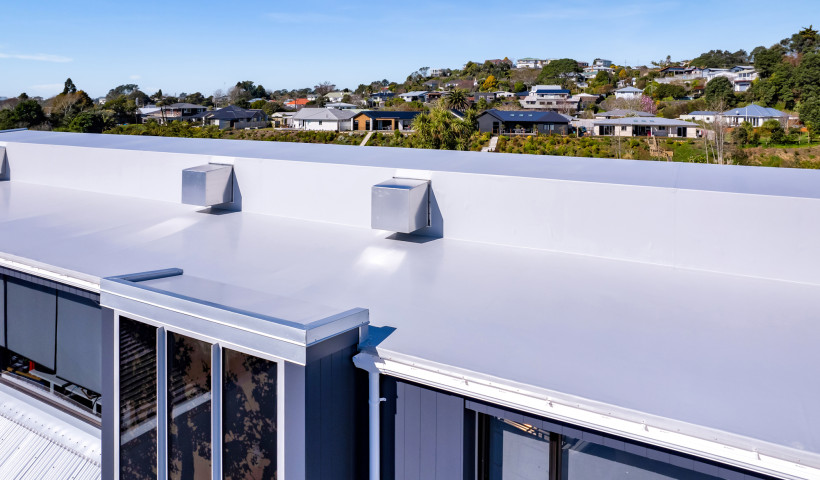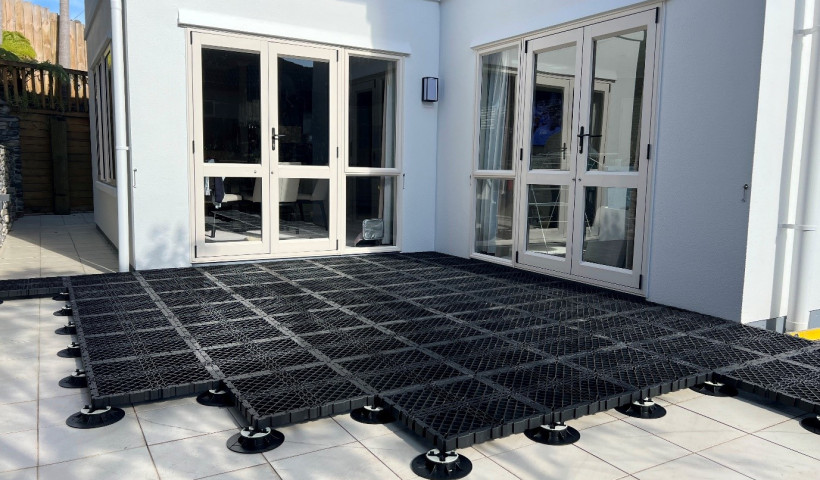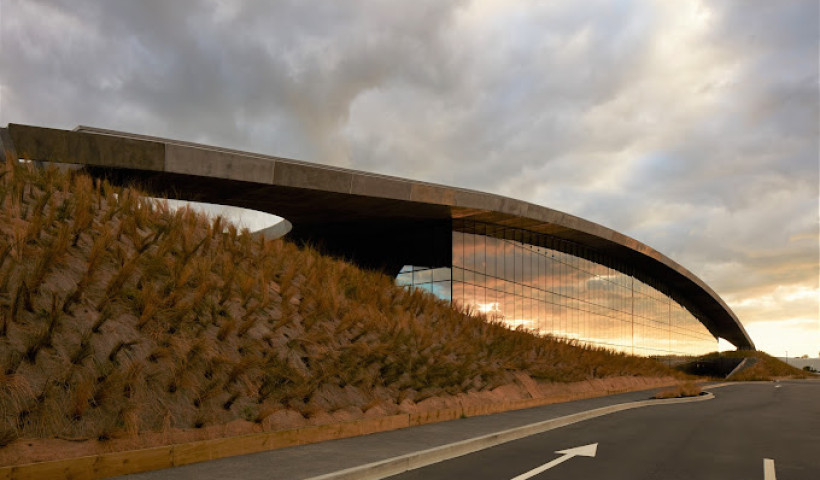
Membrane systems are steadily evolving to meet the demands of greater waterproofing integrity, and flat roofs present innovative opportunities for enhancing the environmental sustainability of our built world. Each generation of construction and design needs to challenge the standard and go further to help rebalance the impact of carbon.
All roofs serve the primary function of preventing water ingress and shedding rain. There are three main areas which support the idea that designing a flat roof can improve energy efficiency and create better living and green spaces.
1. Airtight efficiency
A traditional pitched roof design will introduce airflow into the attic/roof space. This can be an unintended cause of inefficiency in the building performance over time. A flat roof system can eliminate the air leakage concern by removing the ventilated roof space altogether.
This logic applies to warm flat roofs because a cold roof needs ventilation which compromises the thermal efficiencies of an airtight enclosure. Adding continuous insulation with a Nuratherm Warm Roof will save heating/cooling costs in the long term and will create a consistent level of comfort in your building.
2. Green receptivity
A flat roof is significantly more receptive to the installation of green components such as solar panels, green/living roofs and urban agriculture. A flat roof remains flexible for these elements to change and adapt over time. We often see solar panels on new builds, but we can also add them to existing roofs without penetrating the membrane and causing damage. With Nuralite Fixing Plates you can fix solar panels onto any current flat roof.
3. Multi-functional space
A flat roof can be utilised by building occupants for many outdoor activities. From basic outdoor decking, to gardening, hot tubs and bars, rooftop activity is a growing niche that becomes a valuable and functional space for building users. Again, the flat roof is flexible for the life of the building and comes without the impact or cost of using additional planetary surface area.
In the last few years Nuralite have found roof renewals becoming increasingly popular. Overlaying a building's existing roof instead of rebuilding is a way to reduce the amount of carbon attributed to its footprint.
Upgrading the current stock of buildings so they are more fit–for–purpose, instead of demolishing them, is a better option and reduces unnecessary building waste. Nuratherm warm roofs can be retrofitted to existing membrane and metal roofs to extend life and improve building performance.
Carbon usage in building operations has a significant impact on our climate footprint. Upgrading 1,200 commercial buildings to zero-energy would save our entire wind generation capacity. Vital to designing zero energy buildings, warm roofs provide a continuous level of insulation without thermal breaks. These can be used on all properties and are ideal for passive houses.
Architects Declare seek to "Upgrade existing buildings for extended use as a more carbon efficient alternative to demolition and new build whenever there is a viable choice" — and Nuralite agrees.
Nuralite encourages designers to look at options such a Warm Roofs and existing overlays or look to add roof gardens or solar panels to their next project. As suppliers they found themselves in a position to make a difference not only in their own business actions, but in the zero energy building message they promote.
The Emissions Reduction Plan set out by MBIE has come at a crucial time for the building and construction industry and together we can create actionable change.













 New Products
New Products
















 Popular Products from Nuralite
Popular Products from Nuralite

 Posts by Shane Clarke
Posts by Shane Clarke Most Popular
Most Popular



